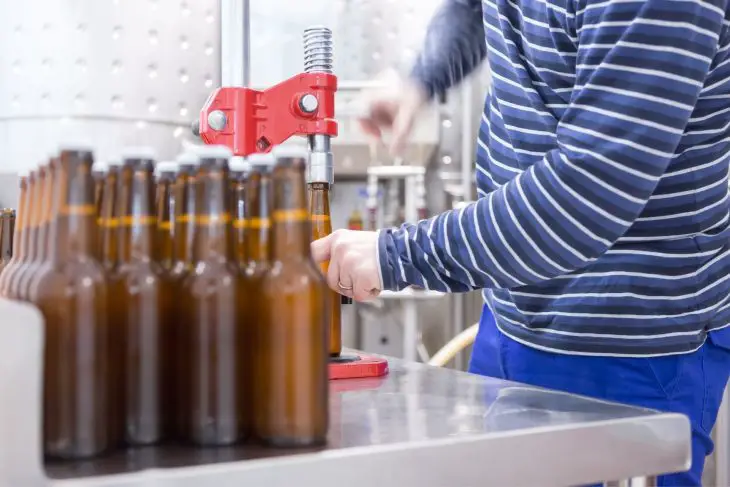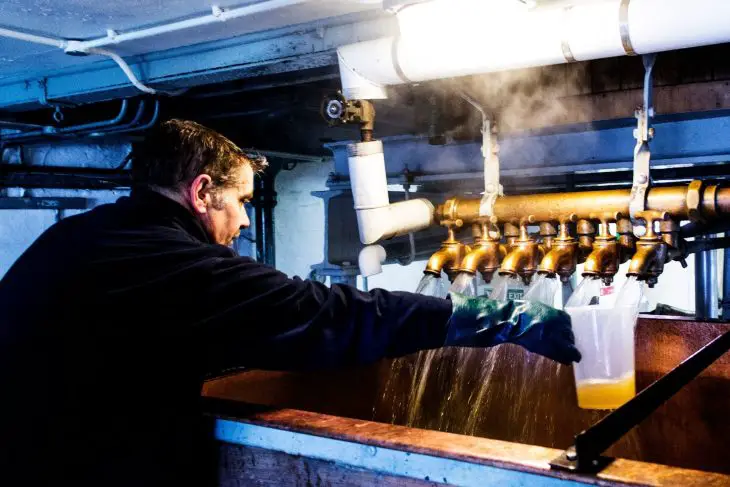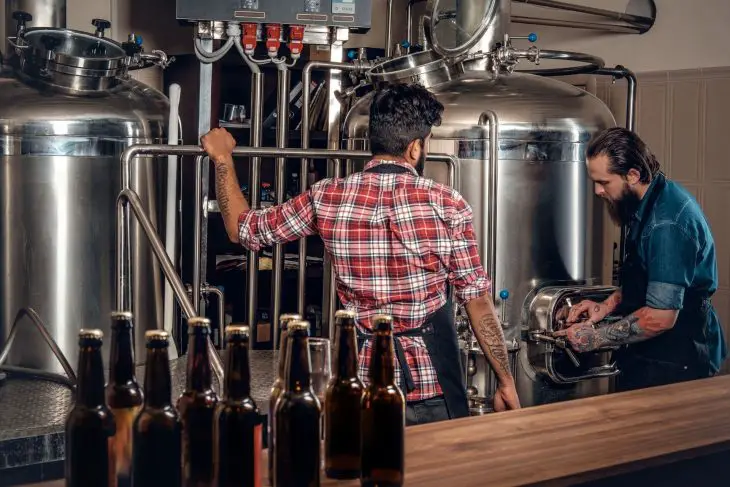Hey there! This site is reader-supported and we earn commissions if you purchase products from retailers after clicking on a link from our site.
Brewing beer takes a bit more than throwing ingredients in a pot and watching it boil. No, beer brewing is a dash of technique, a stroke of inspiration, and some knowledge on the topic. Without these things checked off, you are going to find that your beer comes out tasting a bit…off. Learning the three primary beer brewing methods is just one step on the road to becoming the next homebrewing master.
Knowing a variety of ways to brew beer will also open up the pathway to new recipes and challenges. So, let’s check them out.
Table of Contents

Overview of Homebrewing Beer
Before we get into the nooks and crannies of beer brewing methods, we need to discuss everything else that goes on during homebrewing. You will notice that preparation interweaves with the methods for brewing beer, so you should make everything preceding the part where you make the wort and afterwards something of a routine. That will help you in the long run, since the setup will be done automatically.
So, what’s the first step? You should know this already.
It’s cleaning and sanitizing your equipment.
Gather up all of your brewing equipment and get to work with cleaning and sanitizing the tools, containers, and other pieces. You cannot jump right into homebrewing without knocking out this essential first step. Otherwise, your beer, no matter the beer brewing method you choose, is going to taste atrocious.
Anything that comes in contact with the beer that isn’t a part of the recipe will ruin it. Make sure you are using an unscented cleaner and then a food-grade sanitizer. After completing the first step, you move onward to the fun part—brewing!
The second step is going to be time consuming and requires you to be vigilant. Most brewing recipes are strict on the times you need to boil, soak the hops, and remove the wort from heat. Some methods that we will discuss also have sub-steps, such as boiling, lautering, and mashing.
When the time for boiling the hops is over, you relocate the wort away from the heat source. It has to be cooled swiftly before going into the fermenter.
From there, a whole new journey begins.
But let’s reverse for a moment. The wort you receive from this effort will have different properties, depending on the brewing method you selected.
The 3 Beer Brewing Methods
There are three main types of beer brewing: malt extracts, partial mash, and all-grain. The difference between all these is in the base of the beer, though there are other alterations to consider.

Malt Extract Brewing
This is the most straightforward and simplistic of all the beer brewing methods. Yet, that does not mean that the beer you create is going to be subpar to mashed or all-grain beer. Extract brewing uses something called malt extract, which is sugar derived from premade wort. Usually, you choose between either dry malt extract or liquid malt extract. Both have pros and cons.
Using an extract will make the homebrewing process easier, because you get to skip mashing, lautering, and other steps. For malt extract brewing, you do not require any specific pieces of equipment—just the essentials.
Brewing with a malt extract goes like this: you heat the water, use the malt extract to make wort, add the hops, and then you chill. It’s convenient, hassle-free, and a great option for beginner home brewers.
Partial Mash Brewing
Next, we have partial mash—or “mini-mash.” With this beer brewing method, you use a small amount of malt extract and a larger percentage of grain. Since you are now adding grain to the mix, you get a broader combination of body, flavor, appearance, and quality in the end result. Once you have accomplished successful extract-only brewing, it is wise to challenge yourself with a partial mash recipe.
Making a partial mash beer is a bit more involved than extract brewing—but not by much. You will need to steep your grains with a steeping bag according to the recipe. Some grains will need to be steeped much longer to get any flavor out of them. Once you remove the grains from the water, you can add your malt extract. You will then have wort.
All-Grain Brewing
Now for the expert level brewing technique. All-grain brewing is not for the faint of heart (nor the inexperienced). Since all-grain brewing does not use extracts, you need to do everything by hand. Additionally, you will have to invest in some specialized tools, like a lauter tun, a mash tun, grain mill, and hot liquor tank.
The grains will need to be milled before you steep them in boiling water to expose the starches and enzymes that will make the beer. Then, they go into the mash tun. At this stage, you will have to ensure that the temperature is correct, and that you are stirring enough to prevent lumps. From there, lautering and sparging.
Sparging means you wash the hot fluid off the grains. The process requires a couple of steps before you can begin boiling your wort.
Then, the steps are the same as the other methods: you add your hops, boiling them long enough to get their flavor; chill the wort; then, you add the wort to the fermentor.
Breaking Down The Terms
We have three beer brewing methods—extracts, partial mash, and all-grain. Now, let’s define some of the terms that kept popping up.

Mashing
Aside from malt extract brewing, both partial mash and all-grain beer brewing methods require mashing to some degree. Mashing is the first step in brewing without extracts. What this does is activate any enzymes within the grains to accelerate the conversion from starch to sugar, which the yeast eats to make alcohol.
But that’s not all. Mashing also plays a role in developing the overall quality of your beer. Remember, you need to be mindful of everything you do, from maintaining the temperature to how many times you stir the pot.
You can think of mashing as the alcoholic equivalent to brewing tea. You need to immerse the grains in hot water. Over time, the starches are converted to fermentable sugar.
Lautering & Sparging
So, your grains have steeped. You can’t keep them in the wort. That is where lautering comes in. Lautering is the act of separating grains from the wort.
Doing so also helps any trapped sugars get free from the grains. You lauter your mixture to increase the flavor but also to ensure that the yeast has enough sugar to munch on. If you don’t have enough sugar, you get disappointment in the form of a non-alcoholic beverage. So, the more sugar you have, the happier the yeast will be.
Lautering also involves sparging, where you heat a separate vat of water to a higher temperature than your mash then rinse your mixture with said water.
Boiling
A lot of beginners tend to confuse boiling and mashing, and while the two steps do have some similarities, the process has little in common.
First off, mashing is for converting starches into sugar. But it isn’t done with boiling water. When you do get to the boiling step, you do boil the water for a lengthier period of time than it took to make the mash.
Boiling has a couple of important purposes. First, it destroys anything that will destabilize your beer, such as remaining enzymes, oxygen, and also lowers pH. You also need boiling temperatures for your hops to take a bath.
Wrapping Up
There are three main beer brewing methods: extracts, mini-mash, and all-grain brewing. No process is better than the other when it comes to making a delightfully delicious beer. Although extracts are the recommended starting point for novices, experts use them as well to save time. But now that you know more about the methods, you can truly start branching out and attempting a wider variety of homebrewing recipes!
Recommended Reading
Best Yeast For Mead & Making Mead With Bread Yeast
You also need a great yeast strain to get things brewing up properly. Does that mean that one kind of yeast is better for making mead than others?
An Introduction to Home Kegging
Welcome to Introduction to Home Kegging (Kegging 101), where you learn about kegging your homebrewed beer.
How to Measure Alcohol Content Without Original Gravity
Want to know how to measure alcohol content without original gravity? Though it can be challenging, there are a couple of ways to get a close estimation.
Lager Temperature Control Tips For Homebrewing
Lager temperature control can be difficult if you have just started brewing out. Learn more in the article!
Dry Hopping Your Beer Like a Pro
The concept around dry hopping is very basic. You grab some hops and toss them into the fermenter. Then, you wait a few days for those hops to infuse their aroma and flavor into the beer.
How to Tap a Keg the Right Way in 8 Steps
Do you have a keg of beer sitting next to you that is just waiting to be tapped? We'll help you to tap a keg the right way in 8 steps.

